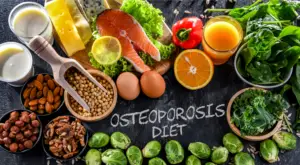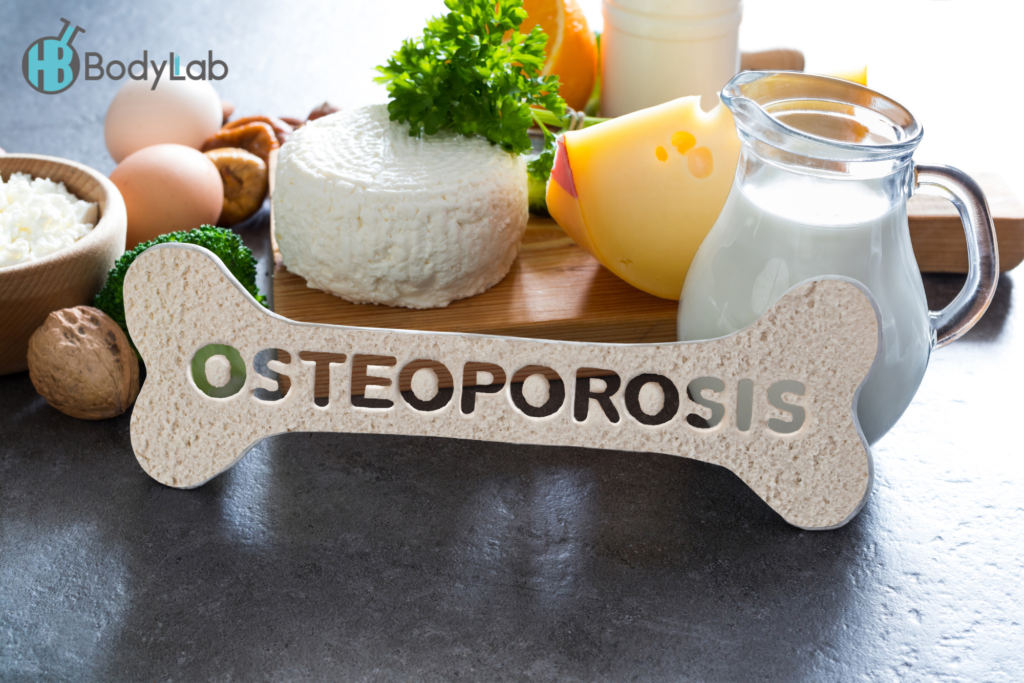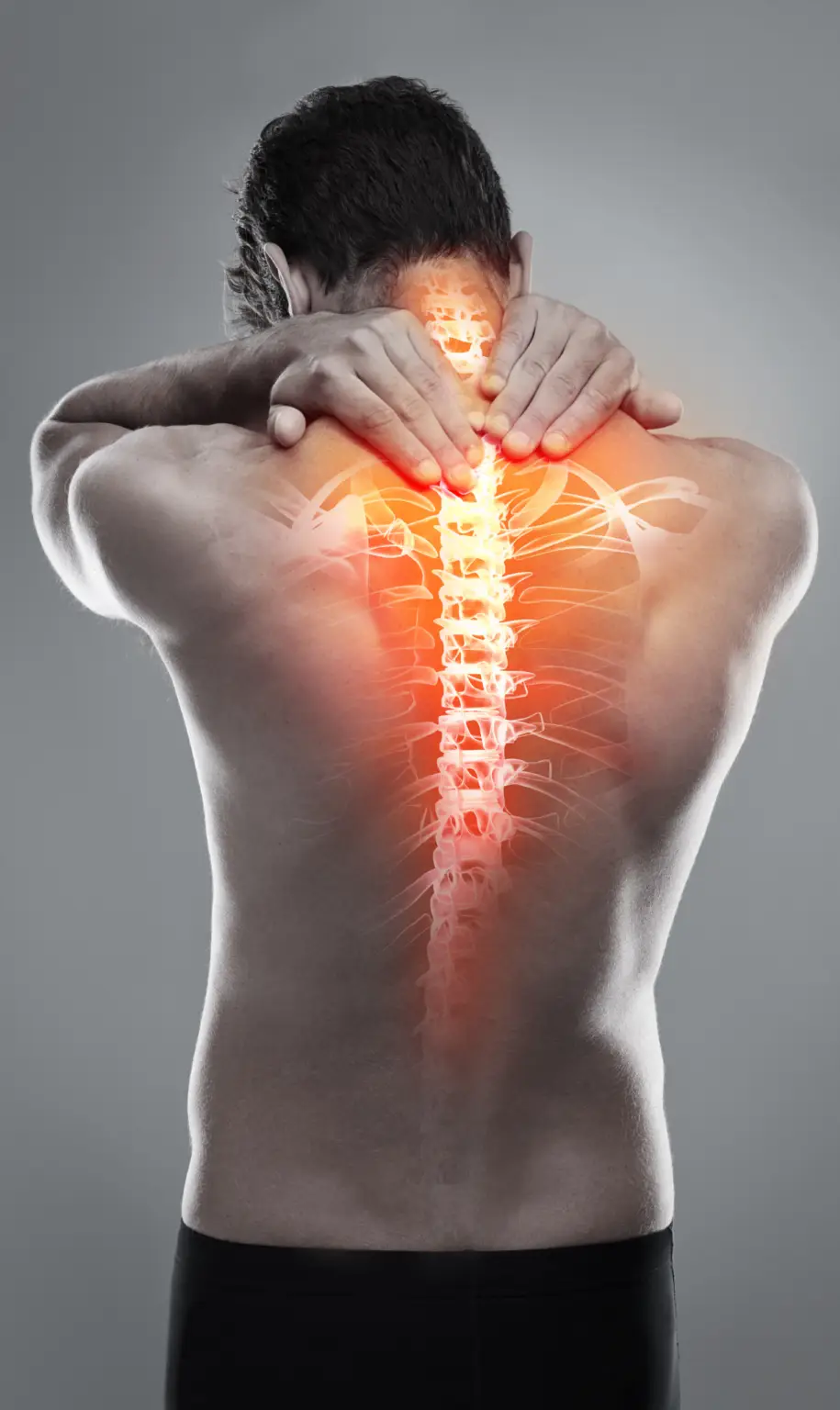Introduction to Osteoporosis
Osteoporosis is a condition that weakens bones, making them fragile and more likely to break. It affects millions worldwide, especially older adults and women post-menopause. Understanding and managing osteoporosis is crucial to maintaining a good quality of life. At HB BodyLab, we offer an integrated approach to treating osteoporosis through physical therapy, chiropractic care, and acupuncture, providing a comprehensive solution to this pervasive health issue.
Demographics Affected by Osteoporosis

Age and Gender: Osteoporosis predominantly affects older adults, particularly postmenopausal women due to the drop in estrogen levels, which is crucial for bone density. However, men are also at risk, particularly as they age and testosterone levels decrease.
- Genetic Factors: Genetics play a significant role in determining bone health. Individuals with a family history of osteoporosis are at a higher risk of developing the condition. Ethnicity also plays a role, with Caucasians and Asians being more susceptible than other ethnic groups.
- Lifestyle and Nutrition: Poor lifestyle choices, such as smoking, excessive alcohol consumption, and a sedentary lifestyle, increase the risk of osteoporosis. Nutritional deficiencies, particularly in calcium and vitamin D, can also compromise bone health.
Implications of Osteoporosis
- Impact on Daily Life: Osteoporosis can significantly affect daily activities. The fear of fractures can limit physical activity, leading to a more sedentary lifestyle, which further exacerbates the condition. Simple tasks like lifting objects, bending, or even walking can become challenging.
- Increased Risk of Fractures: The most serious consequence of osteoporosis is fractures, particularly in the hip, spine, and wrist. These fractures can lead to chronic pain, disability, and even mortality, especially hip fractures in older adults.
- Long-term Health Complications: Chronic pain, decreased mobility, and the psychological impact of living with a chronic condition can lead to long-term health complications. Osteoporosis can also lead to kyphosis, a curvature of the spine that affects posture and balance.
Industries Affected by Osteoporosis
- Healthcare Workers: Healthcare professionals, particularly nurses, and aides, are at risk due to the physical demands of their job, including lifting and transferring patients. The repetitive strain can contribute to bone density loss and increased risk of fractures.
Manual Labor and Construction: Workers in construction and manual labor such as ILWU Longshoreman, Elevator Repair Constructors and construction workers face high physical demands that can exacerbate osteoporosis. The constant heavy lifting and strenuous activities put additional strain on bones and joints, increasing the likelihood of fractures.
- Office Workers and Sedentary Jobs: Even those in sedentary jobs are at risk. Prolonged sitting and lack of physical activity can weaken bones over time. It’s essential for office workers to incorporate physical activity into their daily routines to maintain bone health.
Physical Therapy for Osteoporosis
- Strength and Balance Training: Physical therapy plays a vital role in managing osteoporosis. Strength training exercises help build muscle mass, which supports and protects bones. Balance training reduces the risk of falls, a common cause of fractures in individuals with osteoporosis. Visit our physical therapy services to learn more.
- Weight-Bearing Exercises: Weight-bearing exercises, such as walking, jogging, and climbing stairs, are crucial for maintaining bone density. Physical therapists can design personalized exercise programs that incorporate these activities to help strengthen bones.
- Posture Correction: Poor posture can lead to unnecessary stress on bones and joints. Physical therapists can teach techniques to improve posture, reducing the risk of spinal fractures and promoting better overall alignment and balance.
Chiropractic Care for Osteoporosis
- Spinal Adjustments: Chiropractic care can help manage osteoporosis by ensuring the spine and other joints are properly aligned. Gentle spinal adjustments can relieve pain and improve mobility, helping individuals maintain an active lifestyle.
- Pain Management: Chiropractors can provide non-invasive pain management techniques, such as spinal manipulation and mobilization, to alleviate discomfort associated with osteoporosis. This can help reduce reliance on pain medications and improve quality of life. Explore our chiropractic services for more information.
- Improving Mobility and Flexibility: Chiropractic care focuses on improving overall mobility and flexibility, which are often compromised in individuals with osteoporosis. Regular chiropractic sessions can help maintain joint function and prevent stiffness.
Acupuncture for Osteoporosis
- Pain Relief and Relaxation: Acupuncture is an ancient practice that can provide significant pain relief for those suffering from osteoporosis. By stimulating specific points on the body, acupuncture can reduce pain and promote relaxation, making it easier to manage the condition. Discover our acupuncture services for detailed information.
- Enhancing Circulation: Improved circulation from acupuncture can enhance the delivery of nutrients to bones, promoting healing and bone health. This holistic approach supports the body’s natural healing processes and improves overall well-being.
- Supporting Overall Well-being: Acupuncture not only addresses physical symptoms but also promotes emotional and mental well-being. Managing stress and anxiety through acupuncture can improve the overall quality of life for individuals with osteoporosis.
Diet and Nutrition for Osteoporosis
Calcium-Rich Foods: Calcium is essential for maintaining bone health. Incorporating calcium-rich foods such as dairy products (milk, cheese, yogurt), leafy green vegetables (kale, broccoli, spinach), and fortified foods (orange juice, cereals) can help ensure adequate calcium intake.
- Vitamin D: Vitamin D is crucial for calcium absorption. Sunlight is a natural source of vitamin D, but it can also be obtained from foods such as fatty fish (salmon, mackerel, tuna), egg yolks, and fortified foods. In some cases, vitamin D supplements may be necessary to meet daily requirements.
- Protein: Adequate protein intake is important for bone health. Include lean meats, poultry, fish, beans, and legumes in your diet to provide the necessary building blocks for bone repair and maintenance.
- Magnesium and Potassium: Magnesium and potassium also play a role in bone health. Nuts, seeds, whole grains, and bananas are good sources of these essential minerals. A balanced diet that includes a variety of these foods can support overall bone strength.
- Limitations on Certain Foods: It’s important to limit the intake of foods and substances that can negatively impact bone health. This includes reducing salt, caffeine, and alcohol consumption, as they can interfere with calcium absorption and bone density. Processed foods high in salt and sugar should also be minimized.
- Hydration: Staying well-hydrated is crucial for overall health, including bone health. Water is the best choice for hydration, but milk and other fortified beverages can also contribute to your daily calcium intake.
Integrated Care at HB BodyLab
- Comprehensive Assessment: At HB BodyLab, we start with a comprehensive assessment to understand the unique needs of each patient. This involves evaluating their medical history, lifestyle, and specific symptoms to develop an effective treatment plan.
- Personalized Treatment Plans: We believe in personalized care tailored to each individual’s needs. Our integrated approach combines physical therapy, chiropractic care, and acupuncture to address various aspects of osteoporosis, ensuring comprehensive treatment.
FAQ:
Early signs include back pain, loss of height over time, and a stooped posture. It’s essential to seek medical advice if you notice these symptoms.
The frequency of visits depends on the severity of your condition and the treatment plan. Typically, patients may start with weekly sessions, gradually reducing frequency as their condition improves.
Yes, lifestyle changes such as a balanced diet rich in calcium and vitamin D, regular exercise, and avoiding smoking and excessive alcohol can help manage osteoporosis.
Yes, the treatments offered at HB BodyLab are safe for all age groups. Our professionals tailor each treatment to meet the specific needs of the patient.
During your first visit, you will undergo a comprehensive assessment. Based on the findings, a personalized treatment plan will be developed to address your specific needs.
Conclusion
Osteoporosis can significantly impact one’s quality of life, but with the right approach, it can be managed effectively. At HB BodyLab, we offer an integrated approach combining physical therapy, chiropractic care, acupuncture, and nutritional guidance to provide comprehensive treatment for osteoporosis. Visit our website to learn more about our services and how we can help you manage osteoporosis for a healthier, more active life. Embrace integrated care and take the first step towards better bone health today.


